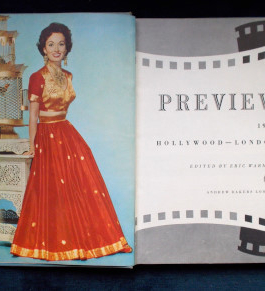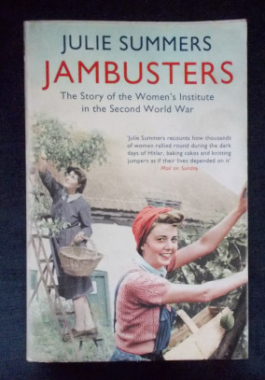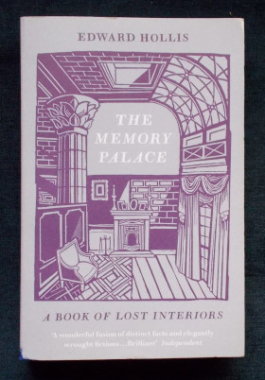-
 In 1762 James Boswell, then twenty-two years old, left Edinburgh for London. The famous Journal he kept during the next nine months is an intimate account of his encounters with the high-life and the low-life in London. Frank and confessional as a personal portrait of the young Boswell, the Journal is also revealing as a vivid portrayal of life in eighteenth-century London. This new edition includes an introduction by Peter Ackroyd, which discusses Boswell’s life and achievement. From the introduction: Boswell was the most charming companion in the world, and London becomes his dining-room and his playground, his club and his confessional. No celebrant of the London world can ignore his book.
In 1762 James Boswell, then twenty-two years old, left Edinburgh for London. The famous Journal he kept during the next nine months is an intimate account of his encounters with the high-life and the low-life in London. Frank and confessional as a personal portrait of the young Boswell, the Journal is also revealing as a vivid portrayal of life in eighteenth-century London. This new edition includes an introduction by Peter Ackroyd, which discusses Boswell’s life and achievement. From the introduction: Boswell was the most charming companion in the world, and London becomes his dining-room and his playground, his club and his confessional. No celebrant of the London world can ignore his book. -

 A teaser of the upcoming movie attractions of 1957, with interviews and photos of the great and sadly, some now forgotten as well as details of the films in production. There's on-set candid shots as well as glamour pics, with plenty for the vintage film enthusiast: Jack Lemmon, John Wayne; Jean Simmons, Marilyn Monroe, Joan Collins, Doris Day, a young Benny Hill and many more. Film previews include The Battle Of The River Plate, The Spirit Of St. Louis, Giant, Kismet and more. Illustrated with numerous colour and black and white photographs.
A teaser of the upcoming movie attractions of 1957, with interviews and photos of the great and sadly, some now forgotten as well as details of the films in production. There's on-set candid shots as well as glamour pics, with plenty for the vintage film enthusiast: Jack Lemmon, John Wayne; Jean Simmons, Marilyn Monroe, Joan Collins, Doris Day, a young Benny Hill and many more. Film previews include The Battle Of The River Plate, The Spirit Of St. Louis, Giant, Kismet and more. Illustrated with numerous colour and black and white photographs. -
 In 1969 , six Englishmen - well, one was Welsh and another was an interloping American...) came together to create a television programme about an unscrupulously, u trustworthy and frankly slimy theatrical agent called Monty Python. The resultant programme was said to be a Flying Circus...Here, for the first time, Monty himself tells the whole story of all that stuff, admittedly using the voices of several other people to do so. Consequently, he is very grateful to Messrs Chapman, Cleese, Idle, Gilliam, Jones and Palin. Monty Python's Flying Circus forever and a day changed the face of television comedy and now, 400 years later (well...thirty and a bit...) people are still talking about it...Here, in their own words, the men who made Monty Python tell their stories, from childhood lusts to their formative years to their break into television...the full block-busting story of Monty Python. Illustrated with colour abnd black and white photographs.
In 1969 , six Englishmen - well, one was Welsh and another was an interloping American...) came together to create a television programme about an unscrupulously, u trustworthy and frankly slimy theatrical agent called Monty Python. The resultant programme was said to be a Flying Circus...Here, for the first time, Monty himself tells the whole story of all that stuff, admittedly using the voices of several other people to do so. Consequently, he is very grateful to Messrs Chapman, Cleese, Idle, Gilliam, Jones and Palin. Monty Python's Flying Circus forever and a day changed the face of television comedy and now, 400 years later (well...thirty and a bit...) people are still talking about it...Here, in their own words, the men who made Monty Python tell their stories, from childhood lusts to their formative years to their break into television...the full block-busting story of Monty Python. Illustrated with colour abnd black and white photographs. -
 For almost forty years, James Cagney dazzled audiences with one virtuoso performance after another, from the quintessential tough guy in Public Enemy to the psychopathic Cody in White Heat; the manic captain in Mr Roberts; or the great song-and-dance man George M. Cohan in Yankee Doodle Dandy. Few performers have ever so dominated the screen, yet few celebrities are such private and complex people. Raised in the teeming neighbourhoods of pre-World War I by a strong-willed mother and a charming -if unreliable - father, young Jimmy Cagney learnt to use his fists, running with street gangs, several of whose members ended up in prison or on death row. But from boyhood, the tough city kid had a dream to pursue a career - as a farmer. It was only by chance that he became involved in the world of the theatre and vaudeville. There were some lean years, but by his early thirties, Cagney was a household name. In many of his films he played tough, fiercely independent characters - but as this biography bears out, he always avoided the spotlight and the 'glamour' Hollywood life, instead living in a down to earth manner, devoted to his family, his wife of 60 years and a small but true circle of friends, describing his career as 'just a job'. A uniquely creative professional, all the way through. Illustrated with black and white photographs.
For almost forty years, James Cagney dazzled audiences with one virtuoso performance after another, from the quintessential tough guy in Public Enemy to the psychopathic Cody in White Heat; the manic captain in Mr Roberts; or the great song-and-dance man George M. Cohan in Yankee Doodle Dandy. Few performers have ever so dominated the screen, yet few celebrities are such private and complex people. Raised in the teeming neighbourhoods of pre-World War I by a strong-willed mother and a charming -if unreliable - father, young Jimmy Cagney learnt to use his fists, running with street gangs, several of whose members ended up in prison or on death row. But from boyhood, the tough city kid had a dream to pursue a career - as a farmer. It was only by chance that he became involved in the world of the theatre and vaudeville. There were some lean years, but by his early thirties, Cagney was a household name. In many of his films he played tough, fiercely independent characters - but as this biography bears out, he always avoided the spotlight and the 'glamour' Hollywood life, instead living in a down to earth manner, devoted to his family, his wife of 60 years and a small but true circle of friends, describing his career as 'just a job'. A uniquely creative professional, all the way through. Illustrated with black and white photographs. -
 Mature visitors to our shelves may remember the British 70s sitcom The Good Life, wherein Tom and Barbara Good got off the corporate treadmill and began a life of self-sufficiency in Surbiton, complete with pigs, chickens and an irascible goat called Geraldine - much to the initial dismay of their neighbours Margo and Jerry. Their mistakes and adventures were many and hilarious but always on an upward learning curve. Here, Sue Perkins and Giles Coren (Supersizers Go... series) live the good life as an experiment of modern day self sufficiency and have a go at growing and cooking veggies; pottery; baking bread; building a chook run; generating power; how to choose and keep a pig; making Christmas decorations and keeping bees - all a la Tom and Barbara. There's recipes, herbal remedies and how-tos in plenty with coloured photographs.
Mature visitors to our shelves may remember the British 70s sitcom The Good Life, wherein Tom and Barbara Good got off the corporate treadmill and began a life of self-sufficiency in Surbiton, complete with pigs, chickens and an irascible goat called Geraldine - much to the initial dismay of their neighbours Margo and Jerry. Their mistakes and adventures were many and hilarious but always on an upward learning curve. Here, Sue Perkins and Giles Coren (Supersizers Go... series) live the good life as an experiment of modern day self sufficiency and have a go at growing and cooking veggies; pottery; baking bread; building a chook run; generating power; how to choose and keep a pig; making Christmas decorations and keeping bees - all a la Tom and Barbara. There's recipes, herbal remedies and how-tos in plenty with coloured photographs. -
 Every day, President Obama received ten thousand letters from constituents. Every night, he read ten of them before going to bed. This is the story of the profound ways in which they shaped his presidency. Every evening for 8 years, at his request, President Obama received a binder containing ten handpicked letters from ordinary American citizens - the unfiltered voice of a nation -- from his Office of Presidential Correspondence. He was the first to President to save constituent mail, and this is the story of how those letters affected not only the President and his policies, but also the deeply committed people who were tasked with opening the millions of pleas, rants, thank yous, and apologies that landed in the White House mailroom. Here, Laskas interviews the letter writers themselves and the White House staff who sifted through the powerful, moving, and incredibly intimate narrative of America during the Obama years emerges: There is Kelli, who saw her grandfathers finally marry - legally - after 35 years together; Bill, a lifelong Republican whose attitude toward immigration reform was transformed when he met a boy escaping M-16 gang leaders in El Salvador; Heba, a Syrian refugee who wants to forget the day the tanks rolled into her village; Marjorie, who grappled with disturbing feelings of racial bias lurking within her during the George Zimmerman trial; and Vicki, whose family was torn apart by those who voted for Trump and those who did not. They wrote to Obama out of gratitude and desperation, in their darkest times of need, in search of connection. They wrote with anger and respect. And together, this chorus of voices achieves a kind of beautiful harmony: here is a diary of a nation. To Obama is an intimate look at one man's relationship to the American people, and the the intersection of politics and empathy in the White House.
Every day, President Obama received ten thousand letters from constituents. Every night, he read ten of them before going to bed. This is the story of the profound ways in which they shaped his presidency. Every evening for 8 years, at his request, President Obama received a binder containing ten handpicked letters from ordinary American citizens - the unfiltered voice of a nation -- from his Office of Presidential Correspondence. He was the first to President to save constituent mail, and this is the story of how those letters affected not only the President and his policies, but also the deeply committed people who were tasked with opening the millions of pleas, rants, thank yous, and apologies that landed in the White House mailroom. Here, Laskas interviews the letter writers themselves and the White House staff who sifted through the powerful, moving, and incredibly intimate narrative of America during the Obama years emerges: There is Kelli, who saw her grandfathers finally marry - legally - after 35 years together; Bill, a lifelong Republican whose attitude toward immigration reform was transformed when he met a boy escaping M-16 gang leaders in El Salvador; Heba, a Syrian refugee who wants to forget the day the tanks rolled into her village; Marjorie, who grappled with disturbing feelings of racial bias lurking within her during the George Zimmerman trial; and Vicki, whose family was torn apart by those who voted for Trump and those who did not. They wrote to Obama out of gratitude and desperation, in their darkest times of need, in search of connection. They wrote with anger and respect. And together, this chorus of voices achieves a kind of beautiful harmony: here is a diary of a nation. To Obama is an intimate look at one man's relationship to the American people, and the the intersection of politics and empathy in the White House. -
 The Second World War was the WI's finest hour. The whole of its previous history - two decades of educating, entertaining and supporting women and campaigning on women's issues - culminated in the enormous collective responsibility felt by the members to 'do their bit' for Britain. With all the vigour, energy and enthusiasm at their disposal, a third of a million country women set out to make their lives and the lives of those around them more bearable in what they described as 'a period of insanity'. This is the story of the minute and idiosyncratic details of everyday life during the Second World War for the 5,546 Women's Institutes and how they helped to improve the lot of millions of their fellow Britons with their behind-the-scenes, nitty-gritty approach to the daily problems presented by the war. Making jam, making do and mending, gathering rosehips, keeping pigs and rabbits, housing evacuees, setting up canteens for the troops, knitting, singing and campaigning for a better Britain after the war: all these activities played a crucial role in war time. Illustrated with black and white photographs.
The Second World War was the WI's finest hour. The whole of its previous history - two decades of educating, entertaining and supporting women and campaigning on women's issues - culminated in the enormous collective responsibility felt by the members to 'do their bit' for Britain. With all the vigour, energy and enthusiasm at their disposal, a third of a million country women set out to make their lives and the lives of those around them more bearable in what they described as 'a period of insanity'. This is the story of the minute and idiosyncratic details of everyday life during the Second World War for the 5,546 Women's Institutes and how they helped to improve the lot of millions of their fellow Britons with their behind-the-scenes, nitty-gritty approach to the daily problems presented by the war. Making jam, making do and mending, gathering rosehips, keeping pigs and rabbits, housing evacuees, setting up canteens for the troops, knitting, singing and campaigning for a better Britain after the war: all these activities played a crucial role in war time. Illustrated with black and white photographs. -
 The rooms we live in are always more than just four walls. As we decorate these spaces and fill them with objects and friends, they shape our lives and become the backdrop to our sense of self. One day, the houses will be gone, but even then, traces of the stories and the memories they contained will remain. Edward Hollis takes us to the sites of five great spaces now lost to history and pieces together the fragments he finds there to re-create their vanished chambers. From Rome’s Palatine to the old Palace of Westminster and the Petit Trianon at Versailles and from the sets of the MGM studios in Hollywood to the pavilions of the Crystal Palace and his own grandmother’s sitting room, this is a treasure trove of forgotten places and the people who, for a short time, made them their home.
The rooms we live in are always more than just four walls. As we decorate these spaces and fill them with objects and friends, they shape our lives and become the backdrop to our sense of self. One day, the houses will be gone, but even then, traces of the stories and the memories they contained will remain. Edward Hollis takes us to the sites of five great spaces now lost to history and pieces together the fragments he finds there to re-create their vanished chambers. From Rome’s Palatine to the old Palace of Westminster and the Petit Trianon at Versailles and from the sets of the MGM studios in Hollywood to the pavilions of the Crystal Palace and his own grandmother’s sitting room, this is a treasure trove of forgotten places and the people who, for a short time, made them their home.



